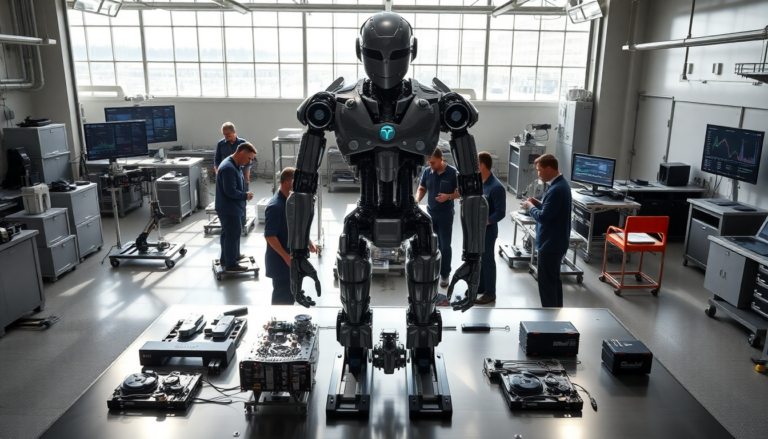Argomenti trattati
The journey of Tesla’s Optimus humanoid robot has certainly taken a few unexpected twists. Recent reports indicate that the ambitious project is grappling with significant production delays and necessary design changes. Initially hailed by CEO Elon Musk as a revolutionary leap forward, the project now faces some critical hurdles that could push its anticipated launch further down the road. So, what’s really going on with Optimus? Let’s dig into the current state of production, the underlying technical challenges, and what it could mean for the future of humanoid robotics.
The Current Landscape of Optimus Production
According to industry insiders, Tesla’s bold plan to roll out around 10,000 Optimus robots by year’s end has hit the brakes due to some unresolved hardware issues. These problems include overheating in the joint motors and insufficient battery life, prompting engineers to take a step back and reassess the design and functionality of key components. This pause has led to a suspension of parts procurement, with Tesla engineers estimating they’ll need about two months to recalibrate. But what does this mean for the company’s ambitious timeline?
This situation is not unique to Tesla; it reflects a broader trend in the tech world where production timelines can be heavily impacted by supply chain issues and the complexities of cutting-edge technology. The focus now shifts to ensuring that the foundational components are both reliable and effective before mass production can kick off. While this pause gives Tesla a chance to enhance the robot’s capabilities, it also raises some tough questions about whether they can meet those initial production goals.
Tackling Technical Challenges and Redesigns
Recent reports emphasize that a redesign process is crucial for overcoming the hurdles faced by Optimus. Specific issues, like the overheating in joint motors and the limited lifespan of transmission mechanisms, are pressing concerns that must be resolved. Tesla is also on the lookout for new suppliers for essential components such as joints and manipulators, which play a pivotal role in the robot’s dexterity and performance. But why is this redesign so important?
The decision to halt production and redesign certain elements arises from a desire to prevent the launch of a product that might not meet consumer expectations. In today’s market, first impressions are everything. Delivering a polished and functional product is key to maintaining the brand’s reputation and ensuring it resonates with consumers. Interestingly, while Tesla’s Optimus is navigating these challenges, competitors like Amazon are successfully integrating robotics into their operations, showcasing a growing fleet of automated systems. This contrast in approaches highlights the diverse strategies companies are adopting in the fast-paced robotics sector.
The Future Outlook for Tesla’s Optimus
Looking ahead, the future of Tesla’s Optimus robot remains a bit murky, but there are certainly reasons to be optimistic. Recent upgrades to the robot’s design—such as improved hand articulation featuring 22 degrees of freedom—signal progress. These enhancements could significantly affect how the robot interacts with its environment, potentially allowing it to take on a wider variety of tasks. So, could this be the turning point for Optimus?
Despite the delays, focusing on refining the Optimus robot before its public debut might ultimately benefit Tesla in the long run. As the company navigates these production hurdles, it’s essential for investors and stakeholders to stay informed about the ongoing progress and adjustments. By prioritizing quality and reliability, Tesla could be setting the stage for a successful launch down the line, even if it’s later than initially planned.
In conclusion, while Tesla’s path to producing the Optimus humanoid robot is filled with obstacles, the company’s commitment to innovation and quality shines through. As the robotics landscape continues to evolve, it will be fascinating to see how Tesla adapts to these challenges—this will be key in determining its future standing in the market.

